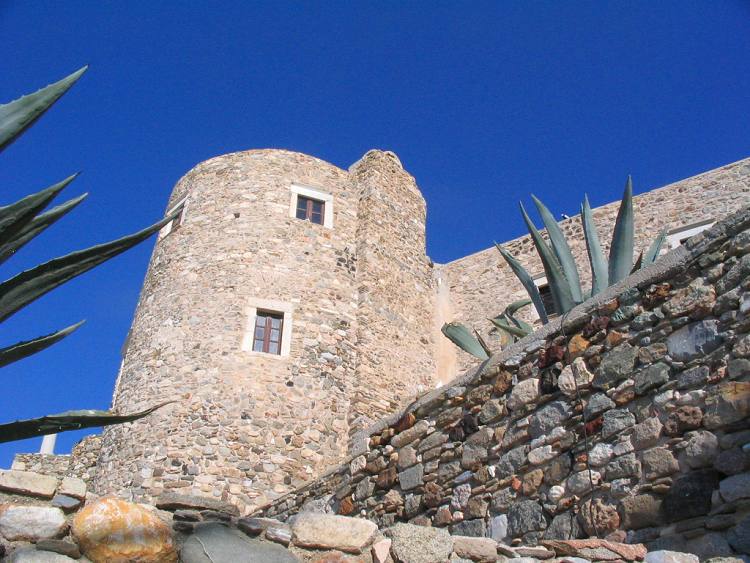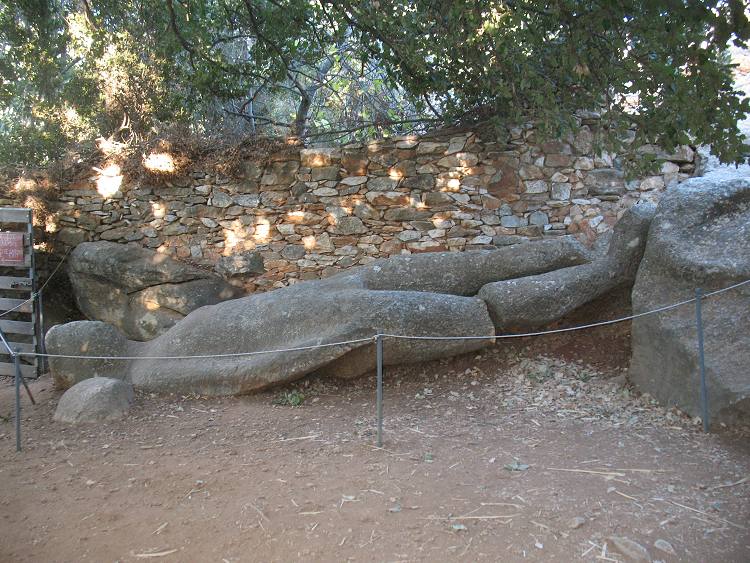Naxos' History
Naxos’ history begins around the age of mythology, and there is considerable proof of the existence of an advanced society here, as early as 4000 BC. Actually, in Zas cave on Mount Zas, artifacts dating back to 5000 BC have been found, some of which, can be seen in the Archaeological Museums in Hora and Apeiranthos.
Only quite recently, evidence of the existence of life here as far back as the Neanderthal Age, 80,000-260,000 BC has been found in Stelida. This is presently being documented and investigated.
History
In the beginning of life on Naxos, populations from northern Greece and Asia Minor came to establish themselves on the island. Some historians claim that Asia Minor had a leader by the name of Naxos, so that is how Naxos got its name. However, other historians say that the name Naxos came from the ancient world, and that in ancient Greek, the word for sacrifice was naxae.
The most impressive historical years for this Aegean island were around the period of 3000 BC, as Naxos was then the main center of the Cycladic civilizations. Ruins, tombs and small statues found from that period, prove this fact. The original capital of Naxos Island actually dates back to these ancient times, and this was the city of Halki ‐ although the capital’s location was changed to Hora, which it is nowadays, after World War Two.
From around 2000 BC to around 1600 BC, the most powerful sailing force on the Aegean Sea was the Cretans, who occupied the Cyclades around that time period.
Between 1600-1100 BC, the Mycenaean civilization thrived on Naxos. To this day, massive amounts of ruins, and remnants of this civilization, can be found stretching from all around the area underneath the Cathedral Square in Hora, to the Grotta, near Portara – where whatever remains there, lies sleeping below its waters.
Dorians occupied Naxos in the period around 1100 BC.
At the beginning of the 5th century BC, there was a Persian occupation of most of Greece, and Naxos was occupied as well.
Even after Greeks had freed themselves from the Persians -about ten years later, around 480 BC- Naxos would never again regain its former glory.
Following Naxos’ occupation by the Romans, from 338 BC – 326 AD, we see the creation of a new Greece, one made up of city states, such as those of Athens, Sparta, Naxos, etc.
As the strongest of these were Athens and Sparta, most smaller city states formed alliances or coalition governments with one of them – Naxos allied itself with Athens.
During the Byzantine period, 362-1204 AD, Naxos didn’t actually undergo many notable events. It is also the time that pirates became a force to be reckoned with.
In 1207, Venice was one of the most powerful forces in the world. It was at that time that a Venetian doge, Enrico Dandolo, sent his nephew, Marco Sanudo, to conquer Naxos and the other Cycladic islands.
The Turks later took Naxos, led by Barbarossa in 1566 AD, lasting until 1821 AD, with the exception a few years of Russian rule, in the early 1700’s.
In 1828, the island was finally united with the rest of Greece.
Noteworthy, from 4000 BC to today, Naxos has continually been inhabited - and there is proof of this from ancient marble tablets, found all over Greece. This differs completely from other Aegean islands, which were often left uninhabited for various periods of time.
In closing, an interesting observation is that from ancient times, up until now, no matter who came to Naxos, and who had the power, no one ever erased or diminished the Naxian heritage - if anything, simply adding to its richness.
Greeks, Italians, Turks - or even those merely coming to Naxos, falling in love with it and staying forever - their descendants have become Naxians, only contributing to the Naxian heritage.







